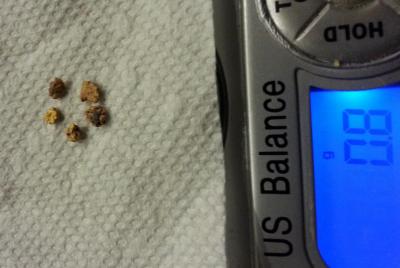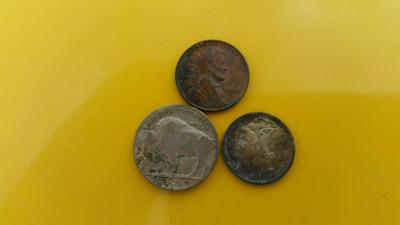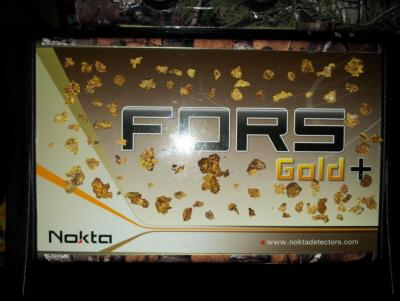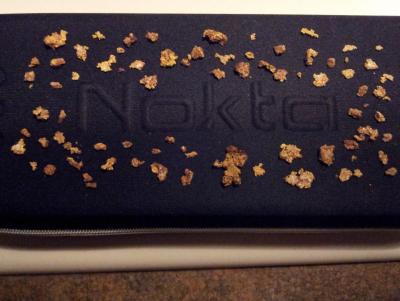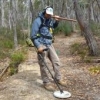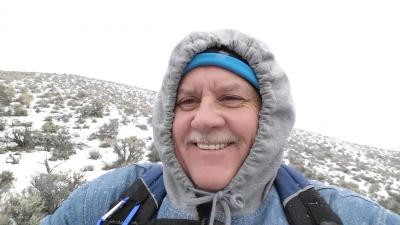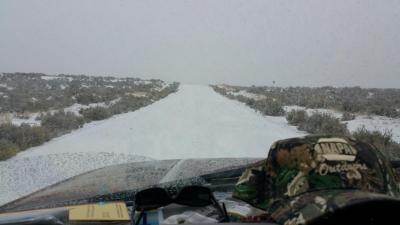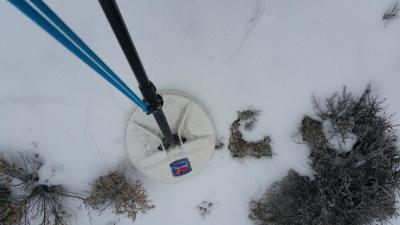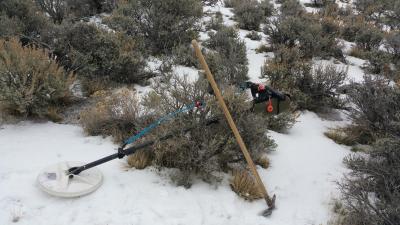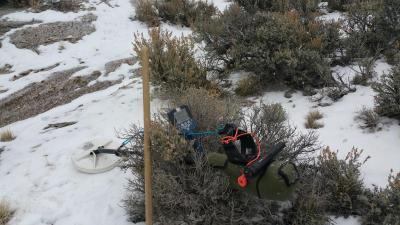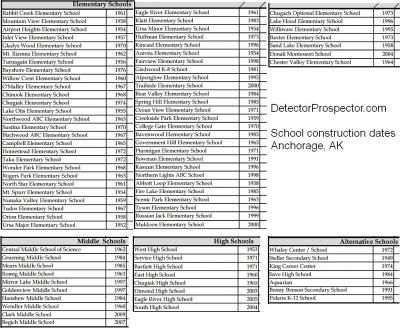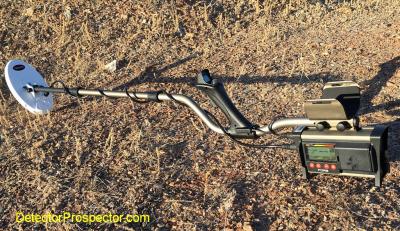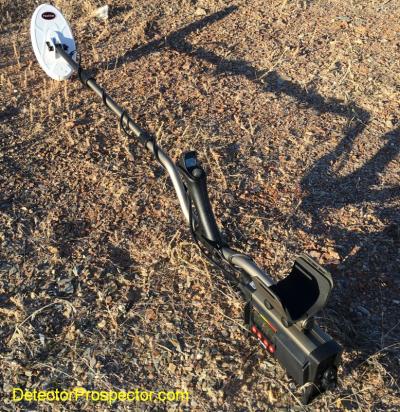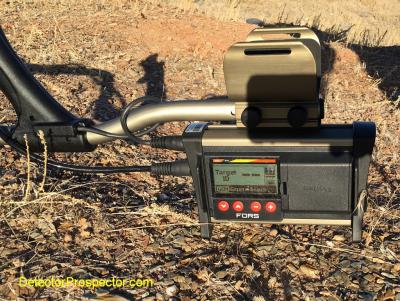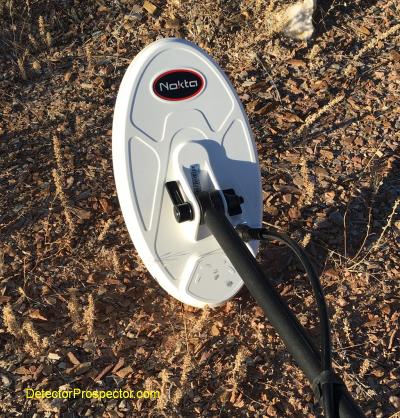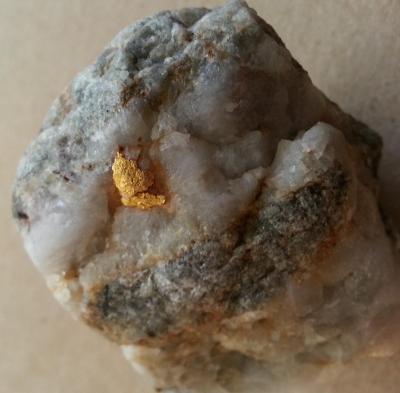Leaderboard
Popular Content
Showing content with the highest reputation on 12/20/2015 in all areas
-
It is perhaps fortuitous that it is the Christmas Season when I am compelled to remind us of the nature of friendship and fellowship in the field. As it happens, today I was just starting my morning prospecting in a new area here in Yuma by the Sea. I could see another truck perhaps 1/4 mile across the canyon, but given the nature of topography in the desert mountains, you can't get there from here. Nevertheless, they drive down a steep 4x4 canyon and come over to say hello. We get to talking, fellow Zed travelers as it were, and the seasoned prospector invites me over to a spot he has found many ounces of gold in the past. I follow them and am acquainted with an area the size of a basketball court with dig holes everywhere. This fellow prospector suggests, that despite all the dig holes, the Zed will still find gold on this little plateau. We start detecting and to cut a long day short we find gold. It is only at lunchtime that I learn that his camping/prospecting partner is a total newby and is only along for the experience. As it turns out, he is a neighbor of my prospecting guide, who is fresh out of treatment for Stage 4 liver cancer. He is merely out for 3 days of camping and fresh air. So, a fellow prospector takes me in and shows me where to find gold, and is simultaneously showing a neighbor whose time on this earth is well nigh near, the wonders of desert sunsets and starlit nights. There is a lesson here my friends and you needn't be driven by bronze age fairy tales or supernatural surveillance to act honorably and ethically in this world. I spent a professional lifetime selling prison sentences to society's misfits who desperately needed them. It is catharic to find these beacons of moral and ethical courage on a little desolate ridge in the far reaches of the desert southwest. Pay it forward my friends, it costs very little in the end. Oh, and the gold.10 points
-
Hello all. I haven't posted in a long time but have been busy! No hunting over the summer due to the wonderful Yuma weather we have. I started college in the fall so hunting didn't start until a few weeks ago. No sooner had I started the SDC up and it had problems. Bad falsing and audio cutouts/volume hi/lo variations. Tried different batteries and cleaning out skid plate w/no help. Minelab said send it back, again, and it's off. Not the same problem I had with first SDC in March, but similar and I'm really bummed as my winter break is over 11 Jan and so goes my hunting time. Fortunately we have a friend here that has a spare md for me to use (Thanks Condor/Steve!). Of the few times out, I did manage to find an old coin spill w/one silver Merc (1943S), an undated Buff and a 55 Lincoln cent. Jan school will be interesting since I'll be taking Geology 101 and my classmate is also my detecting buddy who is better known as Dad. I look forward to it but want my SDC back. Good luck and Merry Christmas to all!6 points
-
I have been hardrock mining most of my life. I must say it is a hard way to make a living but the rewards can be good at times. It has taken years of learning and a lot of prying the tricks of the trade out of the oldtimers to become successful at it. It is also very expensive. The last time I worked the mine it was costing 1200.00 a foot in a 5x7 foot drift. That is including track,ties,waterline, airline,powder,fuse,caps,drill steel and fuel. I never estimated the milling cost. One of the biggest problems now days is putting up the money to get powder. The government wants you to get separate permits for each component you use in blasting. You must also have a certified powder box and they are pricey. On top of that you must also have the powder delivered by the powder company. The last time the delivery fee was $1000.00. I'm not trying to discourage anybody from doing it. There are areas that have the right geology that can be mined with less cost. I worked a mine years ago that was in some very soft ground. I was able to take out the ore shoot with electric jack hammers,but I did have the cost of timbering it. It is one heck of alot of fun when you are on the gold. But very expensive and stressful when you are not! Root5 points
-
Hello, Its been raining alot here lately, but had a little break in the weather today. Before it turns bad again, I went out today for a bit, after a few outside things to get done. I went to a diggings that I first went to couple years ago. Back then I was using a gb 2. Then later I took the original Fors gold there to find it's first gold. I detected there with new Fors plus today for it's first. It has been pretty wiped out there for finding much gold anymore. But you never get all of it. I grided the place real good before, so everytime I go there now, which hasnt been much, I try to think if there is a spot that I might have missed. Ironically, the road I drive in goes right thru the original workings. But I never really detected the road right next to the truck. Today I parked in a different spot cause I didnt want to make ruts on my friends road. So I decided to try the spot where I usually park. Surprisingly there was gold there. Under the truck all those other days. The diggings there had alot of rich shallow small pockets of gold. I found 2 small pockets before in the begging with gb 2. The biggest had just over 1 oz of pieces Today I pulled .63 oz out of the same hole. Almost 12 dwt. I lost track counting somewhere around 50 pieces in all the excitement. But while extracting and later cleaning them, some of them broke into more pieces. The gold is really porous and crystalline so it doesnt weigh as much as it looks. After I pulled those out I detected some more , but only got some junk. Some of the pieces from the pocket were really small, but they sounded off on the Fors plus real good. It definitely was a good present Fors plus found for me. Nothing like finding a pocket of gold, right where it was born. Now back to rainy days ahead. Happy holidays!5 points
-
Hi all, It's Nenad Lonic here - some may know me as Nenad Gone Beepin on YouTube. Long time lurker of Steve's forum, even way back when he ran the shop. Just wanted to say g'day and hope that I can contribute to some topics in the future. Cheers, Nenad4 points
-
This is what it looks like out here today... I have all that stuff with me, but I still have to be super careful...i was walking down a snowy hill....And slipped just a little....And my immediate thought was, How far am I from the truck? Well, I had to skedaddle out of the area because I couldn't see to detect and my left hand was getting too cold from holding the pick.... I just made coffee and had a walnut peach coffee cake....mmmm...I love 12 volt appliances!4 points
-
It can be easier to find the ore shoots if the veins and country rock are exposed. Look for areas of contact. There can be a ton of different ways this can occur. What I try to find is where you have a contact of two types of country rock. Lets say greenstone and slate. Sometimes the slate will be on one side of the vein and greenstone on the other but I like it better if they are running up aginst the vein both from the same side and the quartz vain has cut them or has ran into one and turned a bit.Even better is to have a dike hitting the quartz vain in or near this contact. Usually there will be a solution seam that has brought the gold into this ore shoot.It may be nothing more than a crack usually full of mud or iron. It will be coming out of the county rock or runing with a dike. Where it stays with the quartz will be the shoot. Sometimes it can cross it quickly and the shoot will be smaller than if it runs on more of a angle like close to the strike of the vein. There are just so many different ways ore shoots can forum but what most have in common is they are at contacts. The more contacts the better the chance for a ore shoot. Also think of a quartz vein as a stream if it turns,widens or gets narrow the gold falls out of solution and gets deposited just like in a stream. Gold does not all ways deposit in these contacts or changes. It is just the best places to look first. Root4 points
-
I think it's easy to forget that at the end of the day it's the journey that matters, not the size of your poke, the worth of your truck or your kid's prowess on the soccer field. This forum is dedicated to the friendly exchange of ideas about our hobby/pastime. Let's just remember that as we start a new year that the size of our poke is a personal achievement, but not at the expense of our humanity and good will to others. People might say, "Condor, have your lost your friggin mind and gone Buddhist, we're all about finding gold here". That's true, but today's experience reinforces personal beliefs whose priority may have been temporarily misplaced. I've been helped my many people on this forum, Steve H, Rob A, Nevada Chris, to name a few. There was never a toll for their friendship and assistance. Let's just remember to pass it on to others.4 points
-
First off, let me say welcome to the forum, and that I appreciate the effort you put into the video. So do not take the following personally because it is not aimed at you personally. It is just that perhaps with good intentions your video is doing something I see far too often. In my opinion air tests are completely worthless for evaluating in ground depth performance of metal detectors. In fact, in my opinion when used to draw conclusions between two detectors they can be extremely misleading and this video is a perfect example. Right in the beginning of the video the test is set up as seeing if for twice the money the X-Terra has any advantage over the Ace. Now, if you were just showing an air test of either machine separately all is well. It is the fact this is supposed to reveal how one compares to the other where it all falls apart. The rest of the video is simple misdirection. All the tests after that are air tests, ending with the conclusion that the Ace is just as good as the X-Terra that costs twice as much because it air tests as well. Now that is nonsense and you say as much when introducing your video in the post above. In your post you say "Now I am fully aware that metal detectors react differently when out in the field compared to in an air test environment and I also know that air test's aren't a true reflection of a detectors abilities". So why then make the video and in it not make those exact statements in it? Any person watching your video gets exactly the opposite impression. You imply heavily in the video itself that these air tests have meaning. Air tests only serve a few purposes in my opinion. They allow a person to learn basic things like what the target id numbers and sounds are for various items under perfect conditions, and they tell you what a detector will not do. If a detector cannot detect a small gold nugget in an air test, it is unlikely to do so in the ground. Air tests reveal maximum possible performance under ideal low to no mineral conditions. I do not expect detectors to do better in ground than in an air test. Air tests can reveal how well detectors deal with adjacent trash targets. Air tests can also reveal by comparing two of the exact same model of detector if one is possibly malfunctioning, but even then just because one air tests better than the other it may not mean what people think. It could be the one that air tests better is the one that is malfunctioning! Certain forums obsess over air tests. Yet I do in ground tests on a regular basis that completely reverse the air test results people are getting so excited over. A high frequency detector will often air test better than a low frequency or multifrequency detector, with opposite results in ground. A VLF can easily do better in air tests than a PI detector, with vastly opposite results in ground. The key to all detector performance is ground handling capability. Removing the ground from the equation removes the single most important thing people should care about, and that is evaluating the efficiency of the ground balancing method the detector employs. This ties into target id accuracy, which also can only be evaluated in ground. Target numbers that are nice and solid in air tests skew badly and jump all over the place in real ground conditions. In fact, I can easily misadjust a detectors ground balance to make it perform better in the air, while that very same adjustment will make it perform worse in the ground. I have seen people take detectors with factory preset ground balance settings, and attempt to get better performance by setting it themselves. They usually do so by using air tests to set the internal pot to get the best air test possible. They are then usually surprised to find out the in ground performance actually got worse. Well of course - you can only ground balance a detector over the ground! The ground balance setting that works best for mineralized ground will often hurt performance in an air test. That is why a Pulse Induction (PI) detector air tests so poorly compared to a VLF - a VLF has far less inherent ground handling capability than a PI and that ground handling capability is what a PI is all about. It does not make them air test well - BUT WHO METAL DETECTS IN THE AIR? Air test videos work best for people with low mineral ground, and so are halfway valid for turf hunters or white sand beach hunters. The guys back east love them. For nugget hunters or anyone hunting bad soil conditions, hopefully they know better. VLF detectors in my ground get about 50% of the depth or less than all these air tests that get published all over the place as meaning something. Machines that air test the best are often the absolute worst detectors to put in really bad ground conditions. Now to this video in particular. The Ace 250 is a factory preset ground balance detector. And in low mineral ground conditions your video is halfway valid. The Ace 250 in my opinion is one of the best bang for the buck detectors ever made, and a real credit to Garrett for having produced it. However, the simple lack of a ground balance control means that in bad ground it is seriously out of adjustment and there is nothing you can do about it. Depth of detection is severely impacted and target id accuracy is ruined. The X-Terra because it can be ground balanced easily outperforms the Ace in bad ground to a very large degree, the degree depending solely on the ground conditions. Further, the Ace lacks a true threshold based all metal mode, which mode on the X-Terra is one of the absolute best made. The X-Terra 705 Prospecting mode combined with its iron mask function truly puts the Ace to shame in the hands of a serious operator. Simply no comparison at all. Interestingly, in this video you have an optional 10" DD on the X-Terra vs the smaller concentric on the Ace. Another common error of course is comparing two detectors with vastly different coils. What is interesting in this case is that if compared with proper in ground tests you could show why that DD coil blows the Ace concentric coil away in any sort of bad ground. The concentric will overload more easily and misidentify non-ferrous items as ferrous more readily than the DD coil you have on the X-Terra. This DD advantage of course is completely lost in air tests and in fact concentric coils will usually outperform DD coils in air tests. The best videos are those that show a single detector and show a user how to get the best performance out of it. Nearly all the worst videos are those air testing two or more detectors seeking to determine which is best. Videos of that type must be done in the ground with a great deal of effort expended to explain the conditions and settings and also the inevitable caveats involved in the testing. The main caveats being actual ground conditions relative to where the actual end user is and what types of targets it is that they are seeking. I can show well why one detector perfect for Florida is a poor choice for Arizona, and also the exact opposite. It is all about the ground conditions where a person hunts and that changes from location to location. As far as I am concerned if people are interested in true detector comparisons the only ones that matter are in ground tests on found targets. That is how I test when I get serious about it. I use air tests and contrived buried item tests to reveal certain basic facts (can this detector detect a one grain nugget?) but for serious testing I have to haul two or more detectors into the field, go find targets, and compare the detectors on the found targets. Most top of the line detectors will find 90% plus of found targets just as well, so it takes a lot of time and effort to find the small percentage of targets that reveal true differences between the best detectors. And even then those results are only valid for me in my ground conditions and must be taken with a grain of salt.3 points
-
Jim I mill my own rock. I do use gravity for the getting the concentrates. Or the best thing I have found are Knudson bowls they seem to get a high percentage of the heavy stuff. Jasong It is hard to answer your questions about pockets without seeing the structure that you are working on. You must always try to figure out why the gold is pocketing in that area. There will be a indacator. Once that is determined it is easier to follow the shoot. It may be nothing more than a crack in the rock or a rusty seam but it will prospect. You may only get one color per pan but you have to follow it to the next pocket. I have all ways found more than one pocket usually the further apart they are the bigger they have been. Almost all of them have been within 12 feet of the last one. The more gold pockets you find the more you will learn about what makes them forum in the area you are working. It will make it easier to find the next one. I'm assuming the vuggy pocket you found was close to the surface. If this is the case the other minerals leached out and left the gold behind but this is only a assumption.With out seeing it I'm only guessing. When most pockets are found there is usually a lot of mud in with them this is the other minerals that formed with the gold. I have not mined far from where I grew up and live so I can only give you advice on my experience from within a small mining district. Every district seems to have its own set of rules as to why the gold forums the way that it does and sometimes the individual mines within a district will not follow these rules. When you find gold in a pocket learn all you can about why it is there. If it were easy everybody would be doing it. Reseach is 90% of becoming successfull at mining in a new area.Finding the clues within the reports from the past can be just as fun as finding that first pocket. Root3 points
-
The tricks of the trade are usually only Givin to those that have put in the time. I could write all day on them. One of the best books I have seen on the subject,that have most of them in it,is a book by Koehler S. Stout "The Profitable Small Mine" you will find what you need in this book. You can find it on Amazon. I have mined in old workings mostly,but I have been lucky enough to find a few of my own that the oldtimers missed. Mostly I work mines that throw pockets. Once the frist pocket is found it is only a matter of staying on the shoot line to find more. It is also usually a smaller vein that makes them. They are easier to work with a one or two man operation and the out lay is small and profit is higher.The milling costs are small too. Most of the gold is found in bunches of high grade rock,so milling is usually only done with a few ton that has surrounded the pocket. One of the best pieces of advise I can give is to do your research on the area that you are interested in. Try to find out what made the ore shoots in your area. You must learn how to read the ground. In most places there is a geologic structure that causes the gold to occur in rich enough quality to make a profit. These are at the contacts of a dike and quartz with a third leg that is usually a small seam of iron or calcium or??? If you ask me assays are a waste of time unless you can do hundreds of them. I crush the rock I'm interested in and pan it. I have done it enough that I can give a good estimate of what it runs in free gold. As for the sulfide or telluride ore it must be sent off for assay. I have used detectors under ground in the search for gold and I have had success in doing it,but I think the pan is a better tool for this type of prospecting. Root3 points
-
All the Jelly is going south Paul! The improved roads are fine, for the most part. Do not go in the back country without telling someone where you're going, take several days supplies In the winter, one mistake and you could end up flipped over in a ditch. It happens to folks every year.2 points
-
2 points
-
2 points
-
Steve your post should be pinned permanently on every detecting forum world wide. JP1 point
-
I posted this before but for new members or those that may have missed it- Pocket Mining post on Canadian Prospectors Forum This is an excellent treatise on pocket mining from 1893.1 point
-
I usually sneak off to rye patch every other weekend if the weather permits. I love the weather in the high 40s when detecting. If the wind will stay down. I will say that the wind is more distracting to me than the cold. If I am moving around, 45 is decent weather. And like Chris said, not many people to deal with. I am trying to go to the perimeter of known areas, (after researching claims status) to see if I can find something new on the fringes. Being as I live in Reno it is only a couple of hours for me to Rye Patch. And when Chris and Wilma go to AZ I can always break into their house...(lots of pomegranate jelly and coffee there)...I can always get a loaf of bread for toast !!!lol I would also like to get over on the CA foothills too, but that is a little more time consuming. Good hunting to you all this winter.1 point
-
Just a set of photos of the FORS Gold+ and some accessories. For a field report for use relic hunting see http://www.detectorprospector.com/forum/topic/1414-dankowski-report-on-fors-gold-plus/ There are lots of posts on finding gold with the FORS Gold models at http://www.detectorprospector.com/forum/tags/forums/nokta%2Bfors%2Bgold/1 point
-
Steve, you always put information together very well. Thanks. I might have to get one of those Fors plus.1 point
-
Just goes to show I have really wimped up since I left Alaska!!1 point
-
The power of Google. Helps that I researched it all long ago also so I know what to search for.1 point
-
I found this on top of a desert pavement mesa, down about 8 inches. A very low broad tone so I suspect there may be some more gold inside the rock. The visible piece is less than a gram. I detected the hell out of the whole area and not another target to be found. Where is that darn patch I hear so much about?1 point
-
7 minutes: 10 greatest metal detector finds - awesome! Babes not included.1 point



